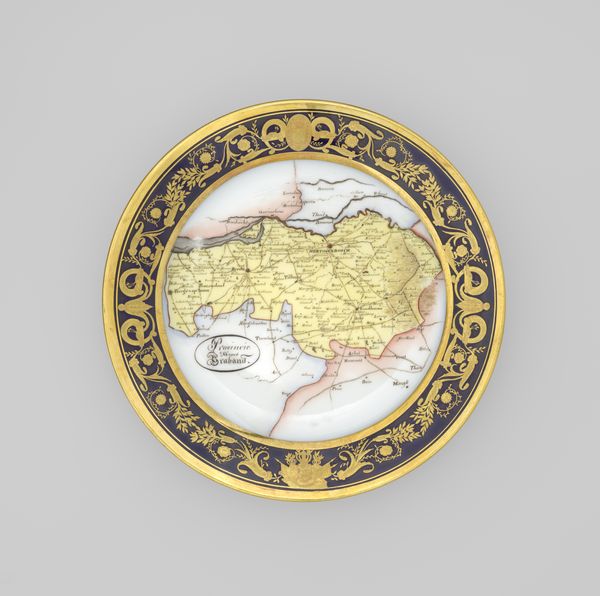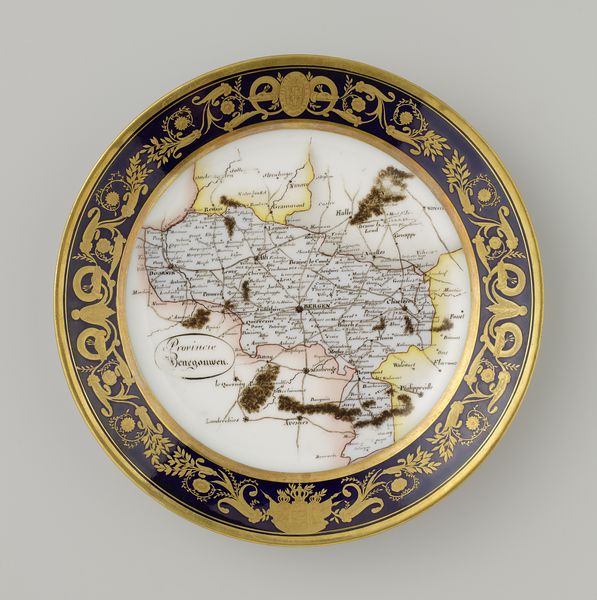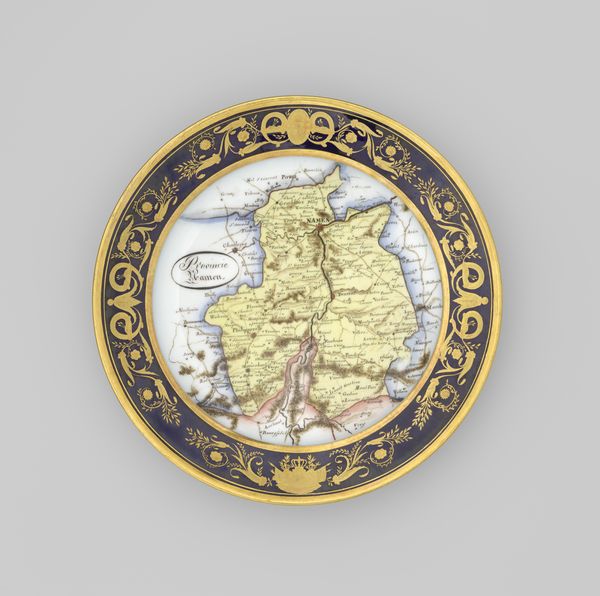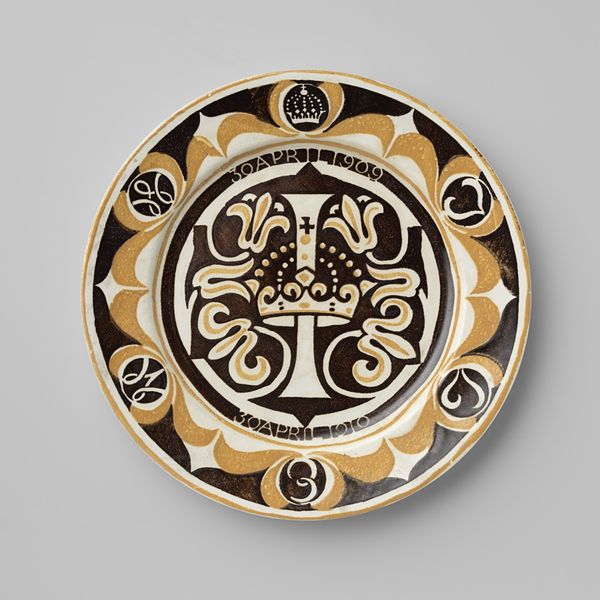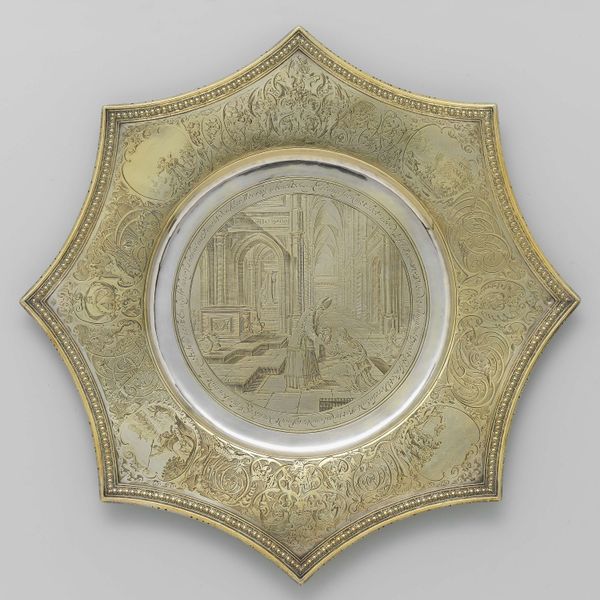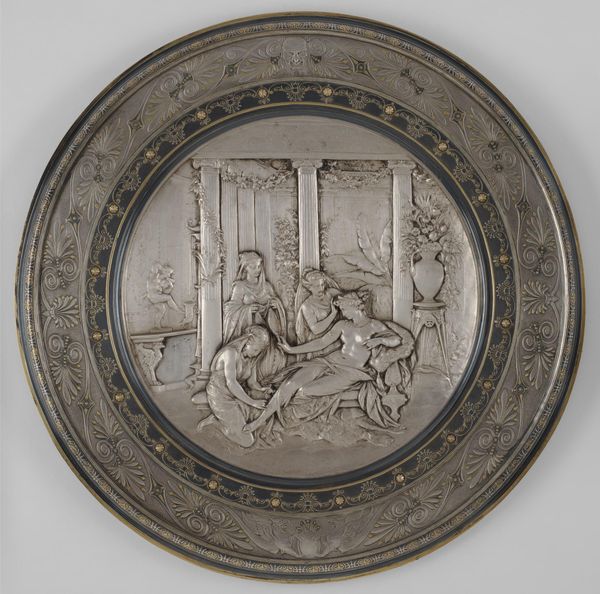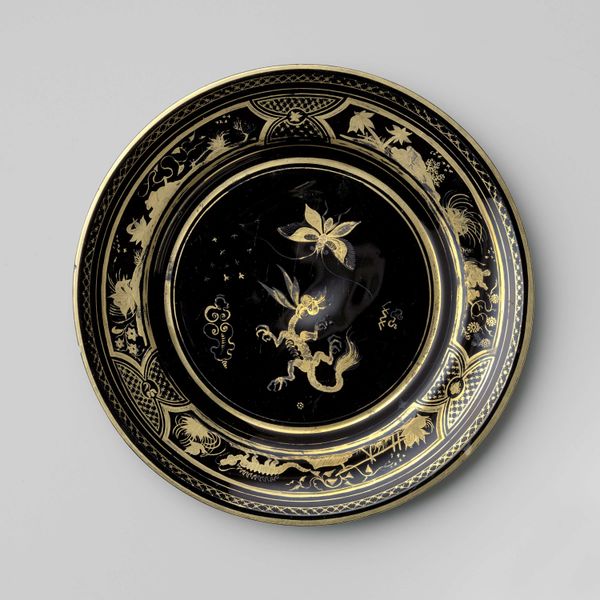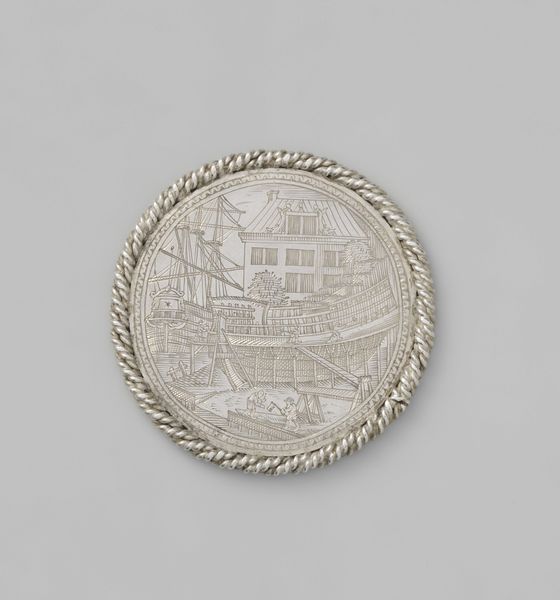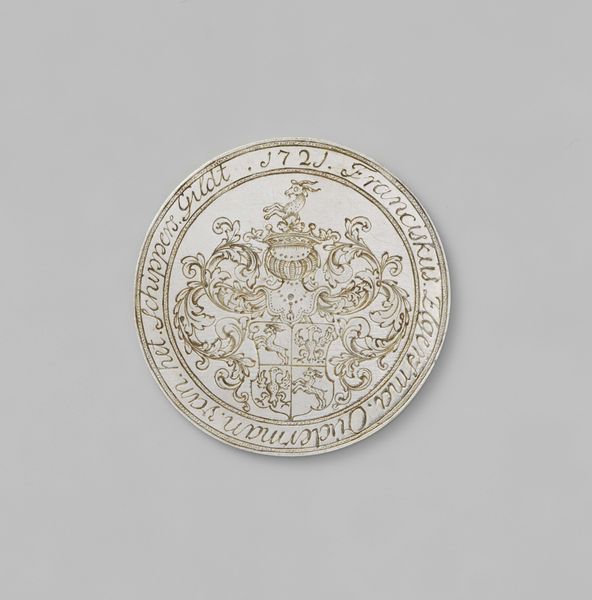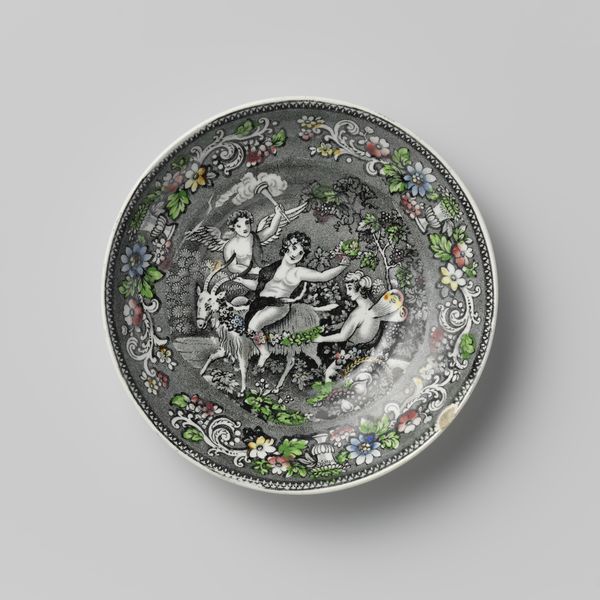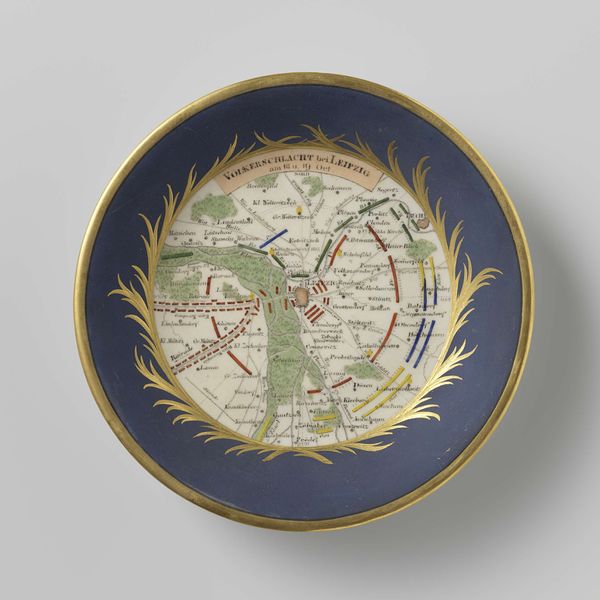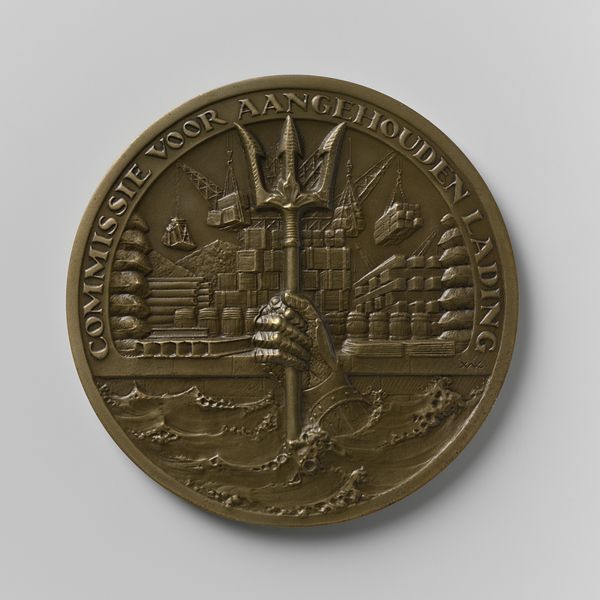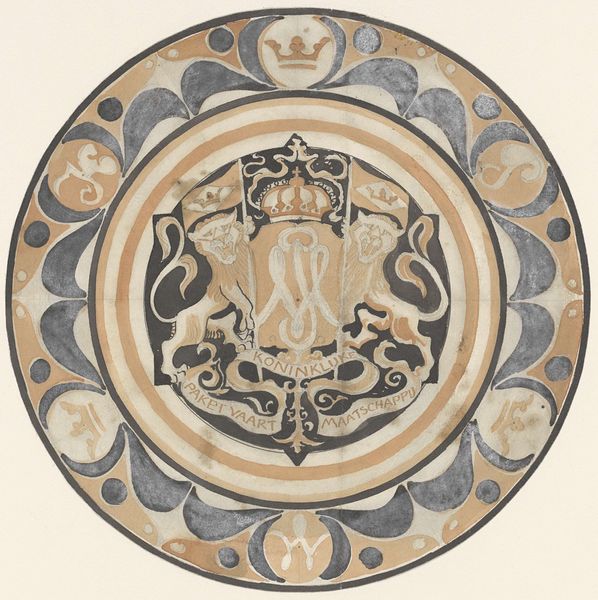
painting, ceramic
#
studio photography
#
product photograph merchandise
#
product studio photography
#
circular oval feature
#
painting
#
product promotion photography
#
product fashion photography
#
ceramic
#
round design
#
retro 'vintage design
#
graphic design product photography
#
product photography
Copyright: Rijks Museum: Open Domain
Curator: Here we have one of a set of eighteen ceramic plates, made around 1822, each depicting a different province of the Netherlands. Editor: My first impression is one of refined practicality. It feels simultaneously like a functional object and a decorative statement piece. The delicate rendering of the province contrasted with the bold ornamentation creates an intriguing tension. Curator: Indeed. Notice the elegant symmetry within the overall design. The central map is surrounded by a meticulously rendered cobalt blue and gold border. Consider the visual interplay between the topographical accuracy of the map and the stylized motifs around it. It invites close looking. Editor: And what do these motifs signify? Could they represent the burgeoning nationalism of the period following the Napoleonic wars? The plate becomes a sort of patriotic object, celebrating the specific geography, and, by extension, the unique character of each Dutch province. The act of eating off the plate becomes a ritual of affirming identity. Curator: A fascinating interpretation! We might also consider the artistic influence of the era. The clear lines and restrained ornamentation place it firmly within the Neoclassical style, a period that emphasized order, reason, and a return to classical forms. The palette, limited to blues, golds, and whites, adds to its sense of formal elegance. Editor: Yet, the choice to depict maps is so telling. Maps are never neutral. They're about power, control, and defining territory, both literally and figuratively. How were these provinces perceived and positioned within the unified Dutch identity that was being carefully constructed in the aftermath of French occupation? And how might that perception differ when viewed through the lens of someone actually from Gelderland? Curator: Those are compelling questions that move beyond the surface aesthetic to uncover deeper socio-political meanings. Viewing this piece exclusively as a visual composition is simply not enough; its beauty lies in its contextual nuance as well. Editor: Precisely. Art, like maps, tells a story. And often, the most interesting stories are hidden within the details, waiting to be excavated. Curator: An excellent point. Hopefully, listeners are inspired to consider what story this work tells to them.
Comments
rijksmuseum about 2 years ago
⋮
These plates reflect the period when the Netherlands and Belgium together formed the United Kingdom of the Netherlands (1815-1830). The kingdom consisted of 17 provinces plus the grand duchy of Luxembourg. The gold decoration is in the Neoclassical style. On the upper edge are the arms of the kingdom, on the lower border those of each province. Today the Netherlands consists of 12 provinces.
Join the conversation
Join millions of artists and users on Artera today and experience the ultimate creative platform.
